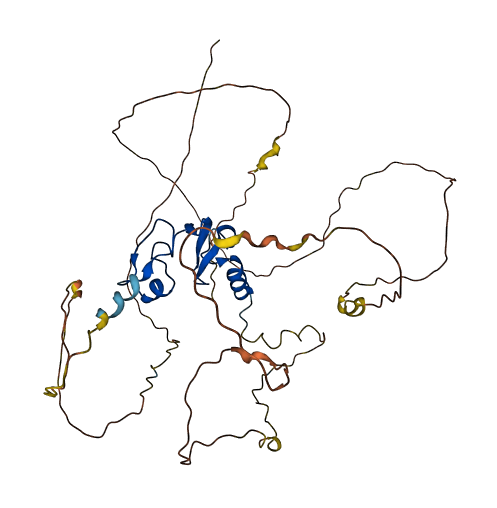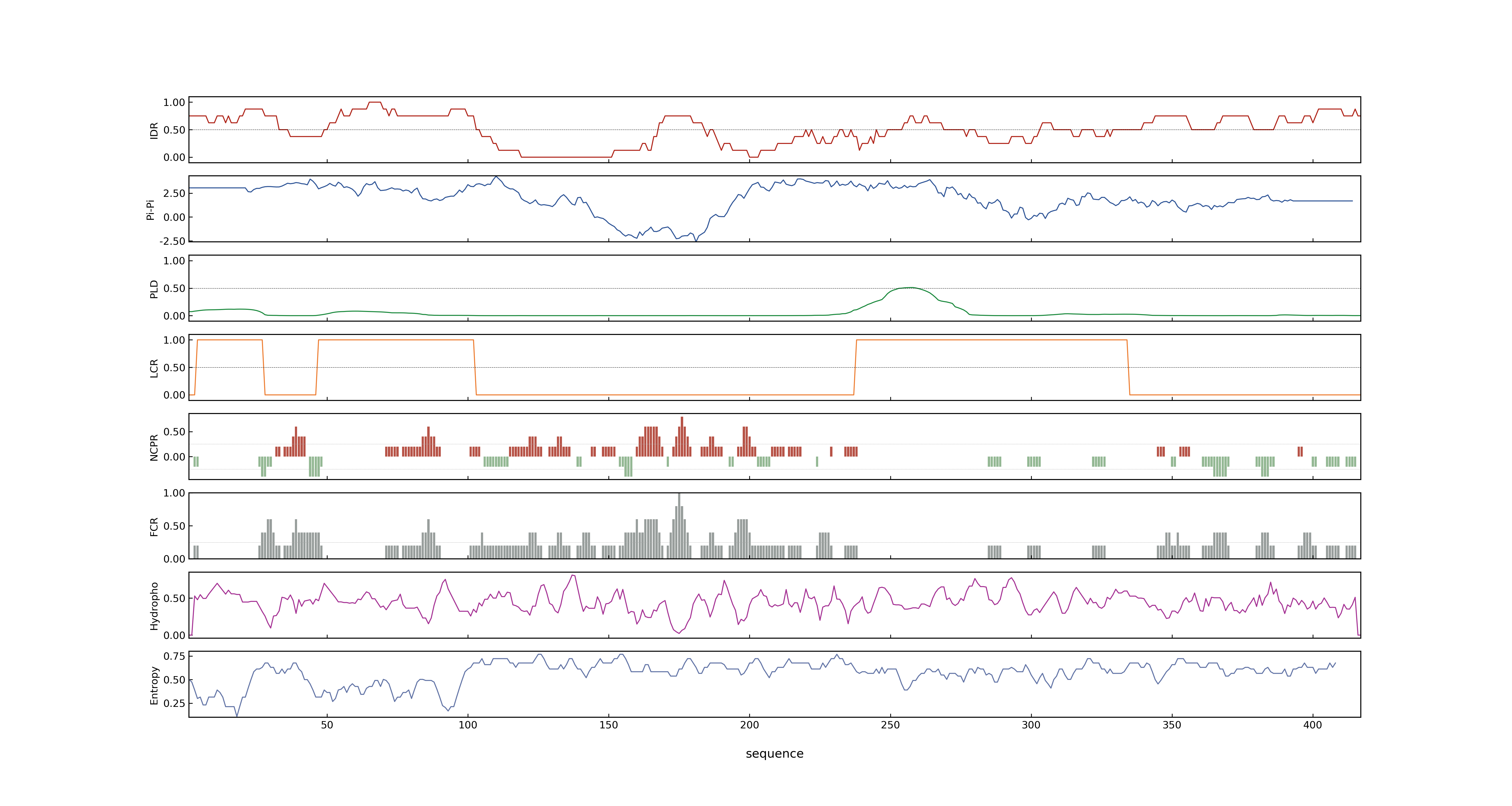- Information
- Symbol: OsSPL14,IPA1,WFP
- MSU: LOC_Os08g39890
- RAPdb: Os08g0509600
- PSP score
- LOC_Os08g39890.1: 0.9519
- PLAAC score
- LOC_Os08g39890.1: 0
- pLDDT score
- 57.12
- Protein Structure from AlphaFold and UniProt
- MolPhase score
- LOC_Os08g39890.1: 0.99984073
- MolPhase Result
- Publication
- Regulation of OsSPL14 by OsmiR156 defines ideal plant architecture in rice, 2010, Nat Genet.
- OsSPL14 promotes panicle branching and higher grain productivity in rice, 2010, Nat Genet.
- Shaping a better rice plant, 2010, Nat Genet.
- Genome-wide binding analysis of the transcription activator ideal plant architecture1 reveals a complex network regulating rice plant architecture, 2013, Plant Cell.
- Enhanced expression of OsSPL14 gene and its association with yield components in rice Oryza sativa under low nitrogen conditions., 2015, Gene.
- A natural tandem array alleviates epigenetic repression of IPA1 and leads to superior yielding rice., 2017, Nat Commun.
- IPA1 functions as a downstream transcription factor repressed by D53 in strigolactone signaling in rice., 2017, Cell Res.
- Genbank accession number
- Key message
- Two studies describe how regulatory variation at the rice gene OsSPL14 can lead to altered plant morphology and improve grain yield
- We demonstrate that a point mutation in OsSPL14 perturbs OsmiR156-directed regulation of OsSPL14, generating an ‘ideal’ rice plant with a reduced tiller number, increased lodging resistance and enhanced grain yield
- Moreover, our results demonstrated that IPA1 could directly bind to the promoter of rice teosinte branched1, a negative regulator of tiller bud outgrowth, to suppress rice tillering, and directly and positively regulate dense and erect panicle1, an important gene regulating panicle architecture, to influence plant height and panicle length
- Here, we report the cloning and characterization of a semidominant quantitative trait locus, IPA1 (Ideal Plant Architecture 1), which profoundly changes rice plant architecture and substantially enhances rice grain yield
- We also demonstrate the feasibility of using the OsSLP14(WFP) allele to increase rice crop yield
- Introduction of the high-yielding OsSPL14(WFP) allele into the standard rice variety Nipponbare resulted in increased rice production
- Ideal plant architecture1 (IPA1) is critical in regulating rice (Oryza sativa) plant architecture and substantially enhances grain yield
- The elucidation of target genes of IPA1 genome-wide will contribute to understanding the molecular mechanisms underlying plant architecture and to facilitating the breeding of elite varieties with ideal plant architecture
- Higher expression of OsSPL14 in the reproductive stage promotes panicle branching and higher grain yield in rice
- OsSPL14 promotes panicle branching and higher grain productivity in rice
- OsSPL14 controls shoot branching in the vegetative stage and is affected by microRNA excision
- Our study suggests that OsSPL14 may help improve rice grain yield by facilitating the breeding of new elite rice varieties
- Here we show that the quantitative trait locus WFP (WEALTHY FARMER’S PANICLE) encodes OsSPL14 (SQUAMOSA PROMOTER BINDING PROTEIN-LIKE 14, also known as IPA1)
- To elucidate its molecular basis, we first confirmed IPA1 as a functional transcription activator and then identified 1067 and 2185 genes associated with IPA1 binding sites in shoot apices and young panicles, respectively, through chromatin immunoprecipitation sequencing assays
- Regulation of OsSPL14 by OsmiR156 defines ideal plant architecture in rice
- Expression analysis of OsSPL14 (LOC_Os08g39890) gene reported to be associated with increased panicle branching and higher grain yield through real time PCR in leaf and three stages of panicle has shown differential temporal expression and its association with yield and yield related components across the genotypes
- Since OsSPL14 is a functional transcription activator, its association of expression in leaf and three panicle stages with yield components as observed in the present study suggests the role of nitrogen metabolism related genes in plant growth and development and its conversion into yield components in rice
- The expression of OsSPL14 at panicle stage 3, has shown correlation (P<0
- Enhanced expression of OsSPL14 gene and its association with yield components in rice (Oryza sativa) under low nitrogen conditions.
- IPA1 functions as a downstream transcription factor repressed by D53 in strigolactone signaling in rice.
- These findings reveal that IPA1 is likely one of the long-speculated transcription factors that act with D53 to mediate the SL-regulated tiller development in rice
- Connection
- Osmtd1, OsSPL14~IPA1~WFP, A T-DNA insertion mutant Osmtd1 aas altered in architecture by upregulating MicroRNA156f in rice., We showed that the expression of OsSPL3, OsSPL12 and OsSPL14 was significantly down-regulated in Osmtd1 or OsmiR156f overexpressed lines, indicating that OsSPL3, OsSPL12 and OsSPL14 were possibly direct target genes of OsmiR156f
- IPI1, OsSPL14~IPA1~WFP, Tissue-specific Ubiquitination by IPA1 INTERACTING PROTEIN 1 Modulates IPA1 Protein Levels to Regulate Plant Architecture in Rice., Here, we report the identification and characterization of IPA1 INTERACTING PROTEIN 1 (IPI1), a RING-finger E3 ligase that can interact with IPA1 in the nucleus
- IPI1, OsSPL14~IPA1~WFP, Tissue-specific Ubiquitination by IPA1 INTERACTING PROTEIN 1 Modulates IPA1 Protein Levels to Regulate Plant Architecture in Rice., IPI1 promotes the degradation of IPA1 in panicles while it stabilizes IPA1 in shoot apexes
- IPI1, OsSPL14~IPA1~WFP, Tissue-specific Ubiquitination by IPA1 INTERACTING PROTEIN 1 Modulates IPA1 Protein Levels to Regulate Plant Architecture in Rice., These results demonstrate that IPI1 affects plant architecture through precisely tuning IPA1 protein levels in different tissues in rice, and provide new insight into the tissue-specific regulation of plant architecture and important genetic resources for molecular breeding applications
- OsSPL14~IPA1~WFP, WTG1~OsOTUB1, Non-canonical regulation of SPL transcription factors by a human OTUB1-like deubiquitinase defines a new plant type rice associated with higher grain yield., OsOTUB1 interacts with the E2 ubiquitin-conjugating protein OsUBC13 and the squamosa promoter-binding protein-like transcription factor OsSPL14
- OsSPL14~IPA1~WFP, WTG1~OsOTUB1, Non-canonical regulation of SPL transcription factors by a human OTUB1-like deubiquitinase defines a new plant type rice associated with higher grain yield., OsOTUB1 and OsSPL14 share common target genes, and their physical interaction limits K63-linked ubiquitination (K63Ub) of OsSPL14, which in turn promotes K48Ub-dependent proteasomal degradation of OsSPL14
- OsSPL14~IPA1~WFP, WTG1~OsOTUB1, Non-canonical regulation of SPL transcription factors by a human OTUB1-like deubiquitinase defines a new plant type rice associated with higher grain yield., Conversely, loss-of-function of OsOTUB1 is correlated with the accumulation of high levels of OsSPL14, resulting in the NPT architecture
- D53, OsSPL14~IPA1~WFP, IPA1 functions as a downstream transcription factor repressed by D53 in strigolactone signaling in rice., IPA1 functions as a downstream transcription factor repressed by D53 in strigolactone signaling in rice.
- D53, OsSPL14~IPA1~WFP, IPA1 functions as a downstream transcription factor repressed by D53 in strigolactone signaling in rice., Here we report that Ideal Plant Architecture 1 (IPA1), a key regulator of the plant architecture in rice, functions as a direct downstream component of D53 in regulating tiller number and SL-induced gene expression
- D53, OsSPL14~IPA1~WFP, IPA1 functions as a downstream transcription factor repressed by D53 in strigolactone signaling in rice., We showed that D53 interacts with IPA1 in vivo and in vitro and suppresses the transcriptional activation activity of IPA1
- D53, OsSPL14~IPA1~WFP, IPA1 functions as a downstream transcription factor repressed by D53 in strigolactone signaling in rice., We further showed that IPA1 could directly bind to the D53 promoter and plays a critical role in the feedback regulation of SL-induced D53 expression
- D53, OsSPL14~IPA1~WFP, IPA1 functions as a downstream transcription factor repressed by D53 in strigolactone signaling in rice., These findings reveal that IPA1 is likely one of the long-speculated transcription factors that act with D53 to mediate the SL-regulated tiller development in rice
Prev Next

